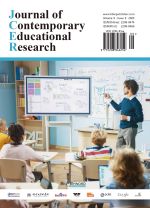Construction of a Self-Directed Learning Model in a Blended Learning Environment
Abstract
With blended learning emerging as a mainstream paradigm in higher education, the Document Security Technology course faces persistent challenges, including vague instructional objectives and low learning efficiency. Simultaneously, the profession demands stronger self-directed learning capabilities from practitioners. To address these issues, this study develops a “Five-in-One” self-directed learning model comprising five interrelated dimensions: goal orientation, instructional regulation, cognitive development, technological resources, and process monitoring. The application of this model has significantly improved course evaluation outcomes, enhanced faculty teaching and research capacity, strengthened students’ practical and innovative skills, and expanded the course’s reach and social impact. The model thus provides both a theoretical framework and a practical pathway for the reform of similar applied courses.
References
Shi Y, Chen L, Chen H, et al., 2025, A study on the influencing factors of students’ deep blended learning in a smart classroom environment. Modern Educational Technology, 35(05): 71–81.
Lu L, 2019, A study on the relationship between perceived teacher autonomy support and the effectiveness of online English autonomous learning: The mediating effect of self-directed learning. Journal of Guangdong Open University, 28(05): 16–22.
Du X, 2023, Optimization strategies for the allocation of “dual-line” blended teaching resources in universities. Modern Educational Management, 2023(03): 103–111.
Xu J, Zhang Y, 2025, Research on the application of deep learning in passport identification. Journal of Liaoning Police College, 27(02): 71–77.
Jiang Z, Liu L, 2018, On the diversification of social evaluation standards for adult learning. China Adult Education, 2018(07): 31–33.

